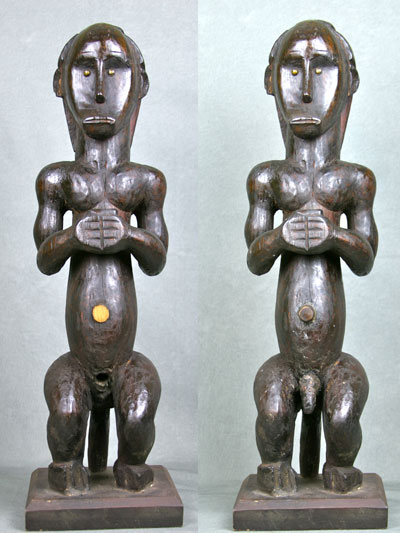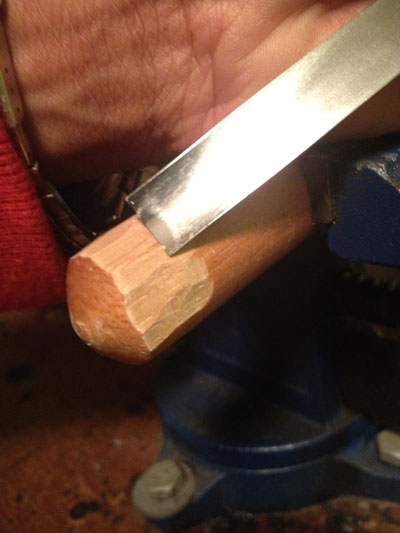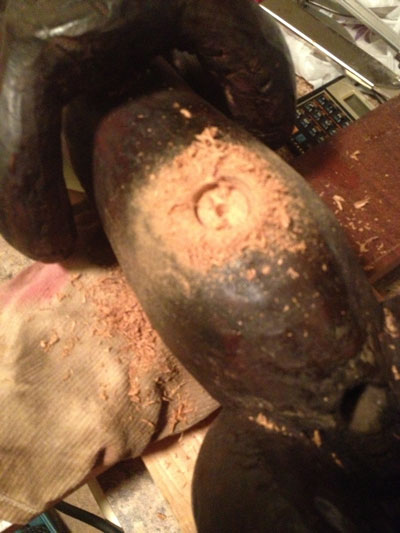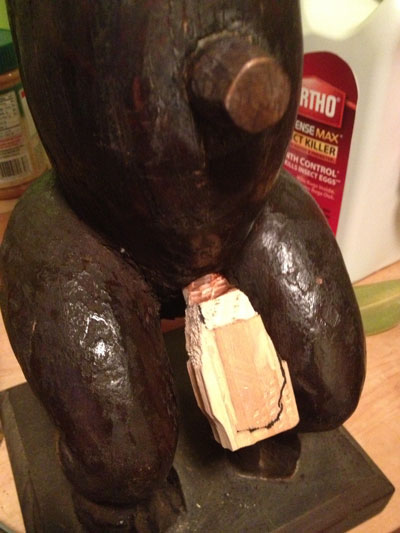I purchased a BandSaw in the summer of 2011; actually I purchased a couple (both used), just a day apart. The first was a neat little Delta 1/5 HP piece of delicate machinery, a woodworking dilettante as it were, which I quickly figured was simply a life-lesson in bad spend. The second (at half the price of the first) is a Sears 1HP pugilist which has proven it can go the distance, while at the same time not requiring a PHD thesis to understand. The more astute craigslist reader would recognize the implication of referring to one saw using ‘was’ versus ‘is’.
The first eureka moment was being jolted awake with the realization that I could possibly create the mounting bases which I absolutely admire, (say eight degree bevel), by using the tilt head capability on the band saw. Now, while this leap of architectural creativity may seem miniscule to some, one should keep in mind that my workaround was to have a straight edge base with a beveled top edge, (yes, I had purchased a router with attendant tips). This is where the Mangbetu came in.

Mangbetu : Off-center beveled,mount
Having received several pieces of African Tribal Art and Statuary the prior week, it seemed strange that two pieces were (disconcertingly) not centered. My first idea of course was to cut (surgical gene, using the newly “discovered” technique) the offending side of the mount, sand, repaint, and gloss. Unfortunately the piece would then lose some character. The base itself showed some age, and wear, which I preferred to retain. The next option was to move the mounting pin a half-inch to the right, a simple but effective alternative. Truth be told I would have cut the base, but there are rules when living in an apartment building, and revving up the band saw at 3:30 am is never a good idea.
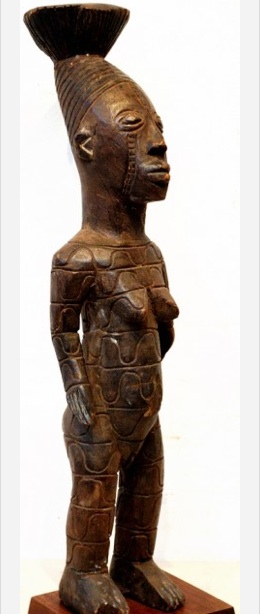
Mangbetu Statue : Female
Fortunately I did spend some time looking over, and cleaning the Mangbetu. I discovered a couple filled-in spots, which were fine, not detracting from the general appearance. What was surprising was that I began to tick off a couple “art appreciation” points. To be brief, the feet, calves, and legs are thick in the cubist style, nice mature figure and stomach, broadening of the upper arms and shoulders, thick neck, contoured chin, proud uplifted heaven directed stance. The other main observation was that most of the extensive Mangbetu scarification was cut or “grooved” versus keloid “raised”, (see Dengese). From the following description this is a painful process.
In the Bamileke country, in southern Cameroun, the artist uses three instruments: a long iron needle, a knife with a wooden handle and a curved blade, and a triangularly shaped native razor. The design is first traced lightly with the knife, then touched up with the razor or needle; the needle is inserted into the marked area of the skin to raise it, and the necessary amount of flesh is then cut away with the razor.
6:45am time to get moving.

